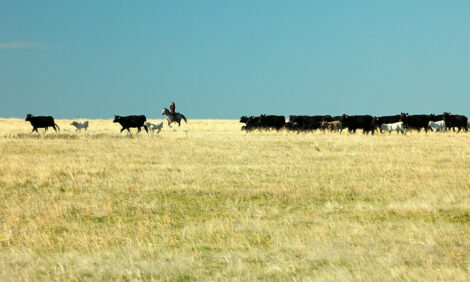



The Tender Genotype
AUSTRALIA - According to research, the tenderness of meat can now be associated with four known genetic markers of the animal.Scientists from the CRC for Beef Genetic Technologies and the CRC for Sheep Industry Innovation are using hair and blood samples to see if livestock have favourable gene markers for tender meat.
“There are currently four gene markers that are known to be associated with tenderness in beef,” says Beef CRC Senior research officer Dr Brian McIntyre.
* "The trial also looked at the interactions between the gene markers and other factors such as hormones, ageing and hanging method." |
|
Beef CRC Senior research officer Dr Brian McIntyre.
|
The two markers looked at in the experiment were calpastatin and Calpain 3, in both Braham and Angus cattle.
“The trial also looked at the interactions between the gene markers and other factors such as hormones, ageing and hanging method.”
Tenderness is measured by the force required to cut through a piece of cooked meat. This Shear force is around 3.5kg for very tender meat and over 5.5kg for tough meat.
Dr McIntyre says research shows cattle with two copies of the most favourable markers have Shear force values almost 1kg less than those with no favourable copies.
Sheep CRC research officer Robin Jacob says studies are examining how genetics affect meat yield, eating quality and nutritional value, to make Australian lamb a profitable premium meat to produce.
“It is important to provide Australian farmers with the tools to better understand how the genetic basis can impact on the quality of Australian lamb,” Dr Jacob says.
Samples will be collected from 10,000 lambs during a five year study and tested for eating quality and nutritional value traits. “These traits include tenderness, shear force, compression and collagen content, colour, shelf life, pH, iron, zinc, and omega-3 fatty acid content,” he says.
TheCattleSite News Desk


